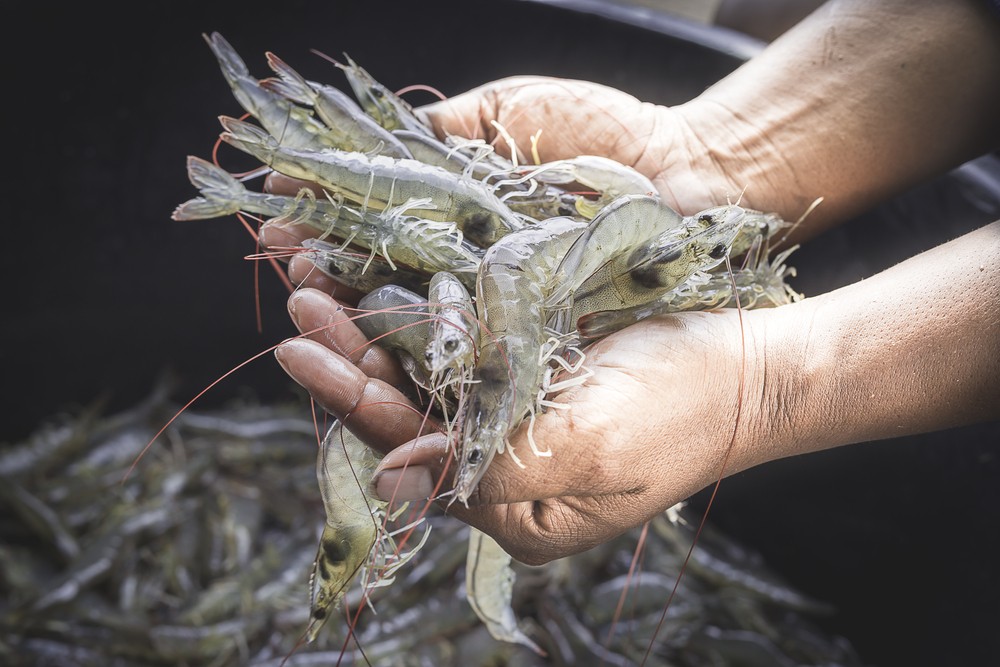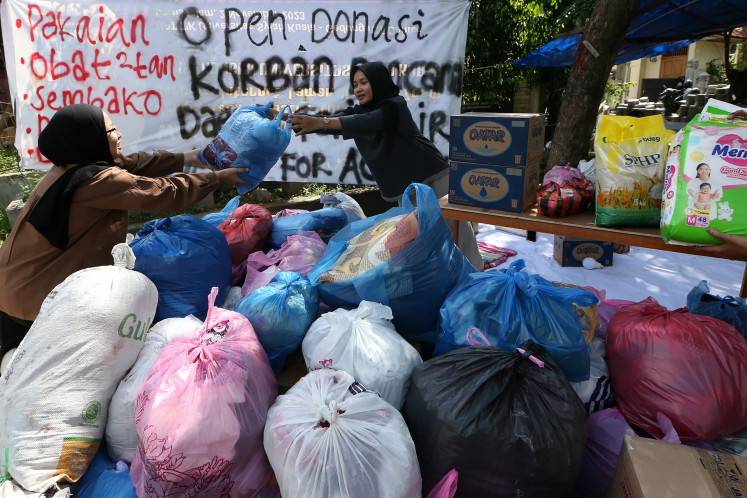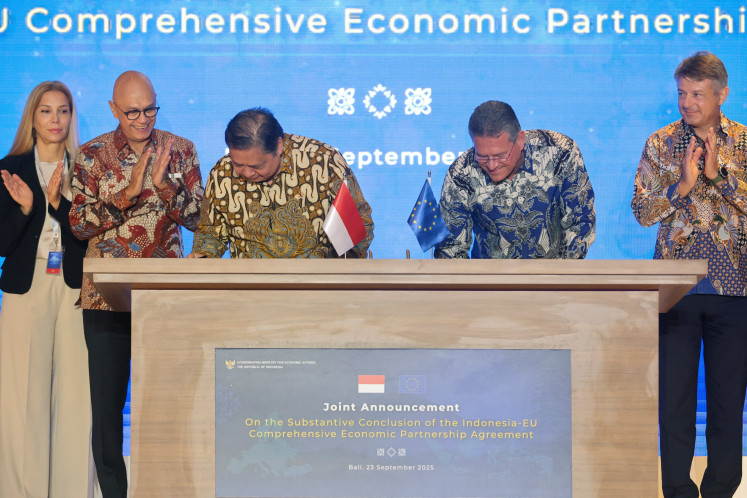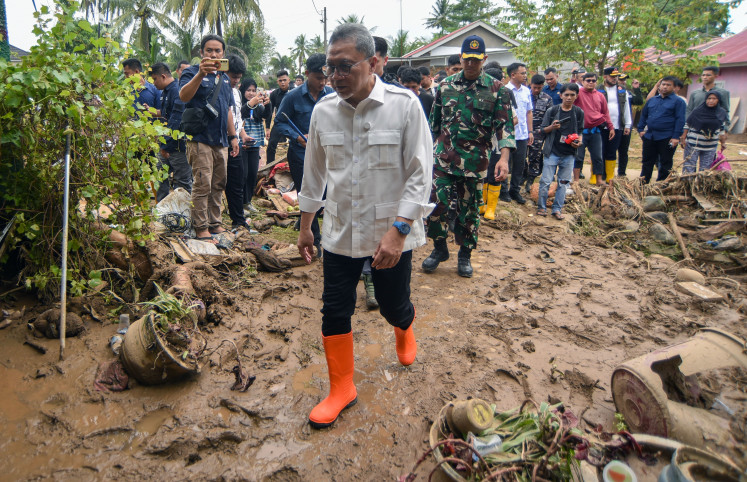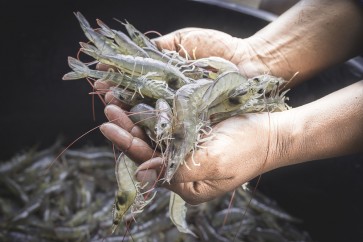Popular Reads
Top Results
Can't find what you're looking for?
View all search resultsPopular Reads
Top Results
Can't find what you're looking for?
View all search resultsIndonesia's arduous path to boost shrimp production
In its effort to increase shrimp output to 2 million tonnes next year, the government must be cautious about the environmental impact and fluctuating export demand.
Change text size
Gift Premium Articles
to Anyone
I
ndonesian fisheries exports totaled US$6.24 billion last year, and shrimp alone accounted for just over a third of that sum. The Maritime Affairs and Fisheries Ministry is trying to increase the efficiency of shrimp farming to reach an annual output of 2 million tonnes next year.
However, industry experts say the government needs to be cautious about the environmental impact of the shrimp industry and fluctuating export demand.
Earlier this month, Maritime Affairs and Fisheries Minister Sakti Wahyu Trenggono launched preparations for the establishment of a shrimp estate in Kebumen, Central Java.
Considered the modern way to do shrimp farming, this may increase the productivity of a traditional shrimp pond by a factor of 10 or even 20.
"If this model is a success, we will revitalize all available fish ponds [based on the same method]," Sakti said on March 6, as quoted by Tempo.
Suhana, a fishery analyst, explained that applying the shrimp estate concept on traditional shrimp ponds would require specific modifications, as the existing ponds were not well organized.
"In general, ponds owned by regular farmers don't have a good sewage system. If we’re not careful, the conversion into shrimp estates may result in waste that could cause environmental damage," Suhana told The Jakarta Post on March 8.

